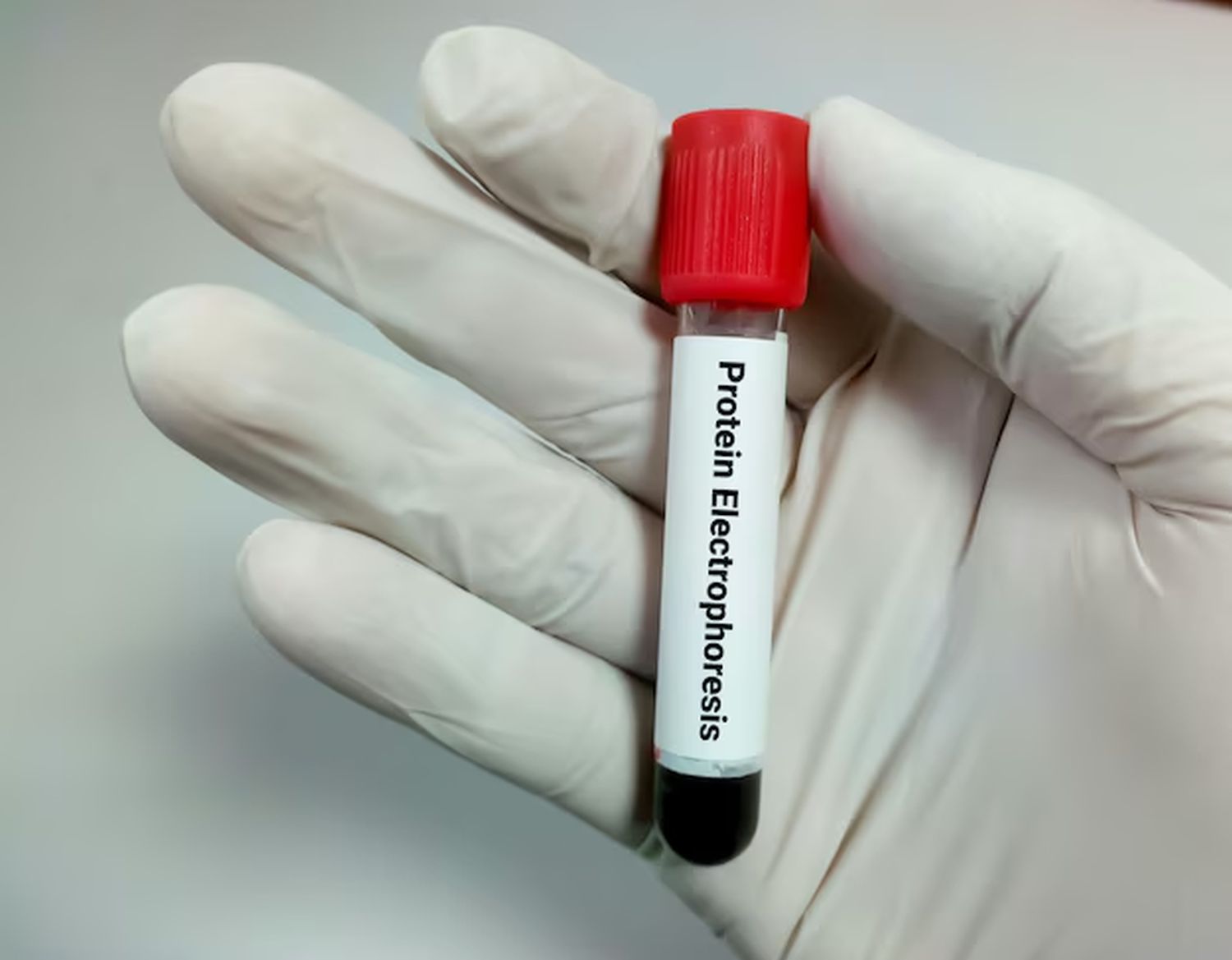Protein Electrophoresis Test Results: Complete Guide

Protein Electrophoresis Test Results: Complete Guide
The protein electrophoresis test evaluates different proteins in your blood or urine. It finds specific protein changes that point to conditions like multiple myeloma, inflammation, or liver and kidney diseases.
If you recently received your results back and need a personalized explanation regarding what they mean, LabAnalyzer can offer a specific breakdown.
This guide explains protein electrophoresis results, their meaning, and their impact on your health.
Types of Protein Bands
Protein electrophoresis separates proteins into groups called bands, based on their size, shape, and electrical charge.
Key Protein Bands Identified:
Albumin:
The most common protein in the blood.
Controls fluid balance and moves hormones, vitamins, and drugs.
Alpha-1 Globulins:
Include proteins like alpha-1 antitrypsin, which guard tissues from inflammation.
Alpha-2 Globulins:
Include haptoglobin, which binds free hemoglobin, and ceruloplasmin, which moves copper.
Beta Globulins:
Include transferrin, which moves iron, and beta-lipoproteins that transport fat.
Gamma Globulins:
These immunoglobulins (antibodies) defend against infection.
Each band shows specific proteins, and their levels reveal various normal and abnormal conditions.
Normal Protein Patterns
A normal protein electrophoresis result shows specific peaks and troughs for each protein band.
Typical Findings in a Normal Pattern:
Albumin: Makes the biggest peak, showing its high levels.
Globulins (Alpha-1, Alpha-2, Beta, Gamma): Create smaller peaks, with gamma globulins forming a broad, lower peak from their variety.
Significance of a Normal Pattern:
Shows balanced protein production, distribution, and breakdown.
Points to no major inflammatory, immune, or cancer disorders.
Normal patterns help identify changes in disease states.
Abnormal Results Interpretation
Unusual protein electrophoresis results show problems in protein production or function, often from health conditions.
Common Abnormal Patterns:
Monoclonal Gammopathy:
A sharp, narrow spike in the gamma region.
Points to conditions like multiple myeloma or Waldenström's macroglobulinemia.
Polyclonal Gammopathy:
A broad, spread-out increase in gamma globulins.
Shows in chronic inflammation or infections, like hepatitis or autoimmune diseases.
Low Albumin (Hypoalbuminemia):
Points to liver disease, malnutrition, or kidney conditions like nephrotic syndrome.
Decreased Globulin Levels:
Points to immunodeficiency or protein loss from gut or kidney disorders.
Clinical Correlation:
Unusual patterns need more evaluation with clinical history and extra testing to find the cause.
Multiple Myeloma Markers
Protein electrophoresis helps diagnose and track multiple myeloma, a blood cancer.
Hallmark Findings in Multiple Myeloma:
M-Protein (Monoclonal Protein):
Shows as a clear spike in the gamma region, indicating excess production of one antibody type.
Decreased Normal Immunoglobulins:
Normal gamma globulins drop from excess monoclonal protein production.
Urine Protein Electrophoresis (UPEP):
Finds Bence Jones proteins (light chains) in urine, which mark multiple myeloma.
Monitoring Disease Progression:
Regular tests check treatment response and disease changes in multiple myeloma patients.
Finding monoclonal proteins early leads to quick diagnosis and treatment.
Inflammation Patterns
Protein electrophoresis identifies inflammation changes, often in chronic diseases or acute infections.
Acute Phase Response:
Increased Alpha-1 and Alpha-2 Globulins:
Shows acute inflammation or infection.
Normal or Low Gamma Globulins:
Points to short-term inflammation with minimal antibody production.
Chronic Inflammation:
Polyclonal Gammopathy:
Broad gamma globulin increase from long-term immune activation.
Elevated Alpha and Beta Globulins:
Shows in autoimmune diseases like rheumatoid arthritis or lupus.
Inflammation patterns guide more testing and distinguish between acute and chronic conditions.
Follow-up Testing Guidelines
Unusual protein electrophoresis results often need more tests to confirm findings and find the cause.
Additional Tests to Consider:
Immunofixation Electrophoresis (IFE):
Identifies specific monoclonal protein types.
Quantitative Immunoglobulin Levels:
Measures individual immunoglobulin classes (IgG, IgA, IgM) for detailed analysis.
Serum Free Light Chain Assay:
Checks light chains for conditions like multiple myeloma or amyloidosis.
Liver and Kidney Function Tests:
Check organ function in cases of low albumin or protein loss.
Clinical Follow-Up:
Review results with healthcare providers to link findings with symptoms and history.
More tests track disease changes or treatment response.
Quick follow-up ensures correct diagnosis and proper treatment.
The protein electrophoresis test finds protein imbalances and identifies conditions like multiple myeloma, inflammation, and organ disorders. Understanding protein bands, unusual patterns, and follow-up testing helps patients and healthcare providers find causes and create treatment plans. Regular protein checks ensure good health outcomes.